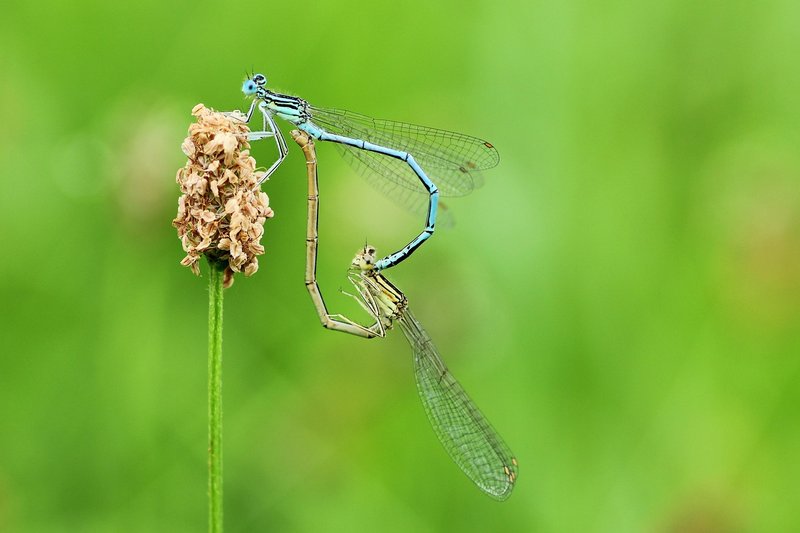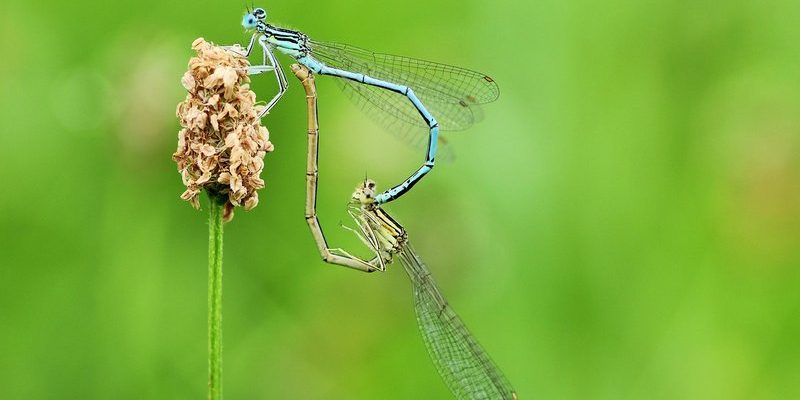
You might be surprised to learn that dragonflies can communicate through various methods, much like we use body language, sounds, and facial expressions. Their vibrant colors often serve as visual cues, while their flight patterns can send subtle messages in the air. So, grab a cup of coffee, and let’s dive into the world of dragonflies. You’ll discover how these agile insects manage to convey information in such a remarkable way.
The Basics of Dragonfly Communication
Dragonflies primarily communicate through visual signals and aerial displays. Their bright colors and unique markings aren’t just for show; they play a crucial role in attracting mates and warding off competitors. For instance, male dragonflies often display vibrant hues to signal their readiness to mate. If you spot one fluttering about with dazzling colors, chances are, it’s trying to draw attention from potential partners.
The way dragonflies fly is also a part of their communication toolkit. They can perform acrobatic maneuvers in the air, which act as displays of strength and agility. You might have seen them darting forward, quickly changing directions, or hovering in place. Each movement can signal vital information, like their fitness level or territory ownership. So, next time you see a dragonfly zipping around, remember that its flight is not just random; it’s a dynamic conversation happening right before your eyes.
Visual Signals: Colors and Patterns
When it comes to visual signals, dragonflies are like living pieces of art. The colors and patterns on their wings and bodies are not just for aesthetics; they have deep social meanings. For example, some species develop brighter colors during the mating season, signaling to potential mates that they are healthy and ready to reproduce.
Additionally, certain patterns may indicate to rivals that a dragonfly is established in its territory. A flash of vibrant color can intimidate would-be challengers, saying, “This area is taken!” Understanding these visual cues is essential for dragonflies as they navigate social interactions.
To give you an idea, here are some common colors and their meanings in dragonfly communication:
- Bright blue: Often associated with male dragonflies that are fit and attractive.
- Green: Can signal readiness to mate, especially in males.
- Brown or dull colors: Might indicate a dragonfly that is either less healthy or not currently in mating condition.
Aerial Displays: Dance of the Dragonflies
Imagine watching a mesmerizing dance in the air—that’s what dragonflies offer with their aerial displays. These dances are not just for beauty; they are crucial for communication. During courtship, males often perform intricate flight patterns to impress females. You might see them doing loops, sudden drops, or swift climbs. This display not only showcases their physical abilities but also lets the female assess the male’s fitness as a mating partner.
Mating rituals can be quite elaborate. During certain displays, male dragonflies may even engage in a behavior called “flying tandem,” where a male and female join together in mid-air. This formation isn’t just stunning to watch—it’s a way for them to bond and move to ideal mating spots.
Understanding these aerial interactions can deepen your appreciation for the complexity of dragonfly life. You might find yourself captivated, wondering what stories are unfolding above your head as they flit about.
Sound Signals: Buzzing and Clicking
While most of their communication is visual, dragonflies also utilize sound. Some species can produce subtle buzzing or clicking sounds, especially when they flap their wings rapidly. This can serve as a form of communication that adds another layer to their interactions.
Imagine a crowded café where everyone is chatting—sometimes, you can pick out specific voices or tones amidst the noise. In the same way, dragonflies use these sound signals to communicate urgency or alert others to their presence. These auditory signals can be particularly helpful in areas with dense vegetation, where visual signals might be less effective.
Not all dragonflies produce these sounds, but for those that do, it’s like having an extra tool in their communication kit. So next time you hear a faint buzz while observing these insects, you might just be hearing a dragonfly’s conversation in action.
Territorial Interactions
Territory is crucial in the dragonfly world. Males often defend specific areas to attract females. You’ll notice they patrol these zones, performing aerial displays to ward off interlopers. When one dragonfly encroaches on another’s territory, it can lead to exhilarating dogfights, showcasing their agility and speed.
During these encounters, visual signals become more pronounced. A challenger may flash its colors or make aggressive moves to signal its strength. The owner of the territory might respond with equally bold maneuvers to assert dominance. This back-and-forth communication is vital for maintaining their standing within the dragonfly community.
Understanding how dragonflies interact in these territorial disputes highlights their complex social structures. It’s like a high-stakes game of chess in the air where every move matters.
Impacts of Environmental Changes on Communication
Just like us, dragonflies are affected by their environment. Changes in habitat, climate, and pollution can influence how they communicate. For instance, if their habitat becomes more crowded or their food sources dwindle, you might see changes in their patterns or behavior.
Pollution can affect their bright colors, making it harder for them to communicate effectively. If a male dragonfly can’t show off its vibrant hues, it might struggle to attract a mate. Similarly, if environmental conditions reduce their visibility or sound, it could disrupt their social interactions.
This raises an important point about the interconnectedness of species and their environments. Protecting habitats is essential for ensuring that these beautiful insects can continue to communicate and thrive.
Dragonfly communication might seem simple at first glance, but it’s a rich tapestry of visual signals, aerial displays, and even sounds. Through their brilliant colors and dynamic flight patterns, they convey messages that are crucial for mating, territory, and social interactions. Understanding how these incredible insects communicate brings you closer to nature’s magic and complexity.
So, next time you see a dragonfly dancing around a pond, take a moment to appreciate the intricate conversations happening in the air. By recognizing their communication strategies, we can better appreciate the importance of these remarkable insects in our ecosystems. After all, every tiny dragonfly is a storyteller in its own right, weaving narratives of survival, attraction, and life.

